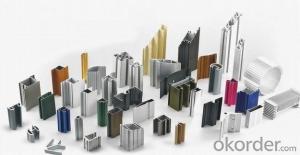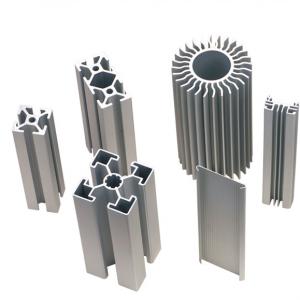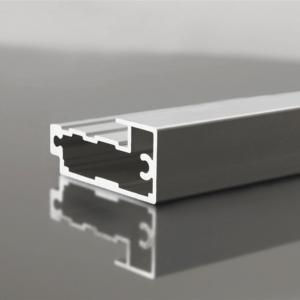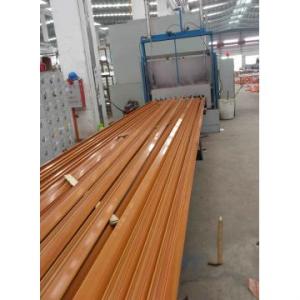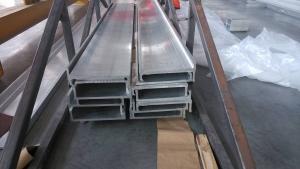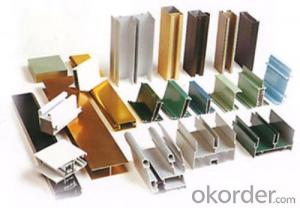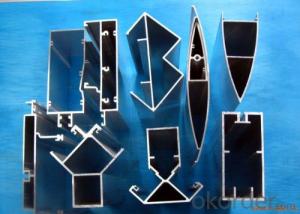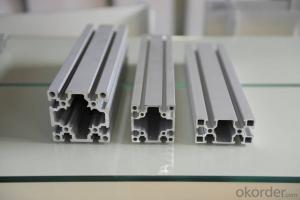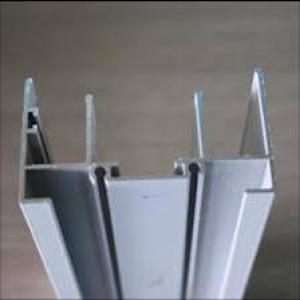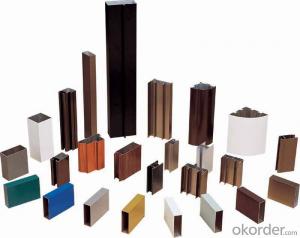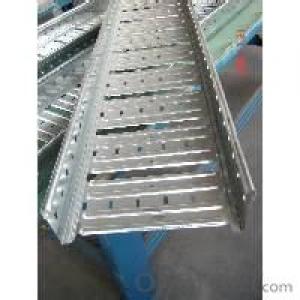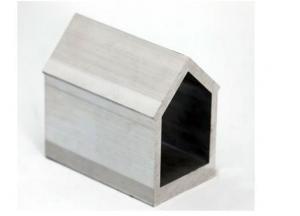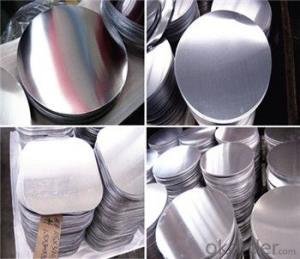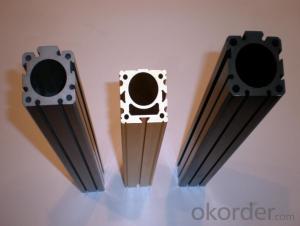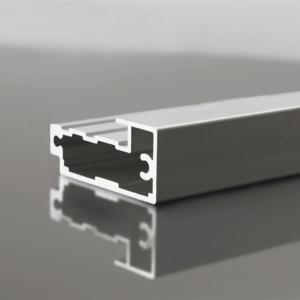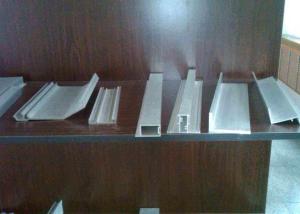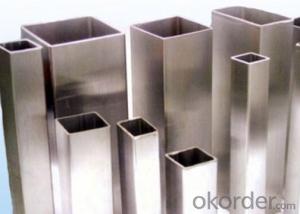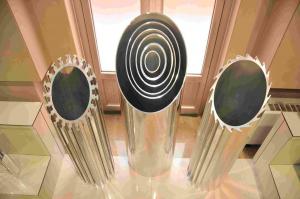Aluminum Frame Extrusion Profiles for Light Application - Best Price and Quality Aluminium Circles
- Loading Port:
- Shanghai
- Payment Terms:
- TT OR LC
- Min Order Qty:
- 5 m.t.
- Supply Capability:
- 2000 m.t./month
OKorder Service Pledge
OKorder Financial Service
You Might Also Like
Specification
Structure of Aluminium Circle for Light Application Best Price and Best Quality Description:
Coated aluminum coil/sheet are of a wide range of colors, which gives wonderful appearance no matter in residential and commercial constructions of great exhibition centers.
The coated aluminum coil/sheet have been widely used in the fields of construction and decoration( garage doors, ceiling etc.), electronic appliances, lighting decoration, air-condition air pipes, sandwich panels and drainages etc.
Main Features of the Aluminium Circle for Light Application Best Price and Best Quality:
1) High flexibility
2) Impact resistance
3) Excellent weather-proof durability
4) Anti-ultraviolet
5) High erosion resist
Images of theAluminium Circle for Light Application Best Price and Best Quality:

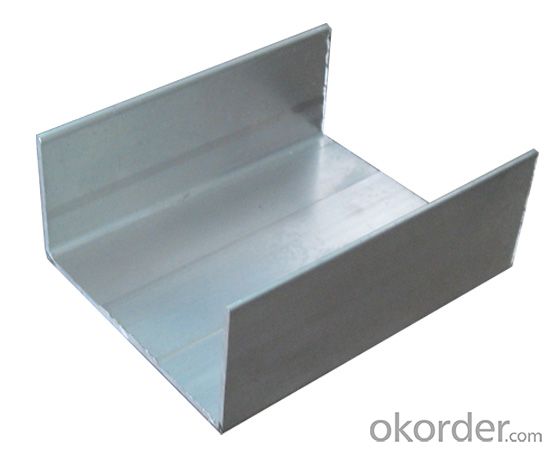
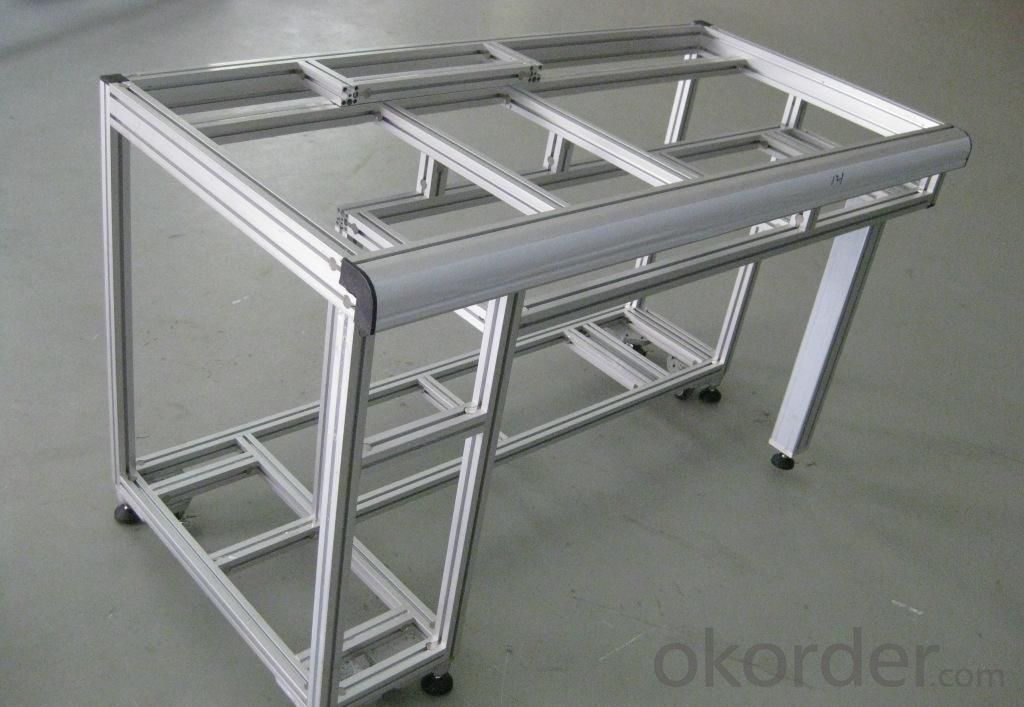
Aluminium Circle for Light Application Best Price and Best Quality Specification:
Alloy | A1100,A3003,A1050,A8011 etc |
Temper | H16,H18,H24 |
Thickness | From 0.024mm to 1.2mm |
Width | Standard width:1240mm |
Special width:1300mm,1520mm,1570mm,1595mm | |
Diameter | Standard dia:1200mm |
Interior dia:150mm,405mm,505mm | |
Weight | 2.5 T/coil,3.0 T/coil |
Coating | PE, PVDF, AC |
Surface | Embossed, mill finish, coated |
Color | AS to code RAL |
Gloss | 10-90%(EN ISO-2813:1994) |
Coating Thickness | PE: more than 18 micron |
PVDF: more than 25 micron | |
Coating Hardness (pencil resistance) | More than 2h |
Coating adhesion | 5J(EN ISO-2409:1994) |
Impact Resistance | No peeling or cracking(50 kg/cm,ASTMD-2794:1993) |
Flexibility (T-bend) | 2T |
MEK resistance | More than 100 |
FAQ:
a.What is monthly capacity
---CNBM is one stated own company and our monthly capacity is about 2000tons.
b. Now which countries do you export your goods?
---Now we export to South East Asia,Africa, North America,South America ect.
- Q: What's the price of aluminum alloy die castings and aluminum profiles?
- In fact, the price is different, mainly depends on quality
- Q: Differences between industrial aluminum and iron products
- The so-called aluminum steel, generally divided into sections and plates, pipes and metal products in these four categories, general structural steel is usually refers to the production of metal structure steel for buildings, bridges, ships, boiler or other engineering. Such as carbon structural steel, low alloy steel, steel and so on.
- Q: This question asks for guidance on selecting the appropriate aluminum profiles for a construction project.
- <p>Choosing the right aluminum profiles for your building project involves several steps. First, consider the specific requirements of your project, such as load-bearing capacity, aesthetic preferences, and environmental conditions. Consult with engineers or architects to determine the appropriate strength, size, and shape of the profiles. Next, evaluate the quality of the aluminum, ensuring it meets industry standards for durability and resistance to corrosion. Look for profiles with good thermal insulation properties and UV resistance to maintain performance over time. Finally, consider the cost-effectiveness and availability of the profiles, as well as the ease of installation and maintenance. Always opt for reputable suppliers to ensure you receive high-quality products that meet your project's needs.</p>
- Q: This question asks for criteria or methods to determine if a specific aluminum profile is appropriate for a given project.
- <p>To determine if an aluminum profile is suitable for your project, consider the following factors: 1) Load-bearing capacity - Check if the profile can withstand the weight and stress it will be subjected to. 2) Dimensional requirements - Ensure the profile's size and shape match your project's specifications. 3) Corrosion resistance - Verify if the profile is resistant to the environmental conditions it will be exposed to. 4) Surface finish - Confirm if the profile's finish meets your aesthetic and functional needs. 5) Compatibility with other materials - Make sure the profile can be effectively joined or integrated with other materials in your project. Consult with an engineer or the profile manufacturer for specific recommendations based on your project's unique requirements.</p>
- Q: How can I distinguish the aluminum profiles in the building and the aluminum in the industry?
- Door frames, aluminum profiles and doors and windows, aluminum profiles are in the building. Your picture is a line of scaffold material, usually in industrial material.
- Q: What are the water-resistant properties of aluminum profiles?
- Aluminum profiles possess excellent water-resistant properties due to their natural oxide layer that forms on the surface. This oxide layer acts as a protective barrier, preventing the penetration of water molecules and inhibiting corrosion. Additionally, aluminum profiles can be further enhanced with various surface treatments such as anodizing, powder coating, or painting, which provide an additional layer of protection against water damage. These treatments not only enhance the aesthetic appeal of the profiles but also increase their resistance to water, making them suitable for outdoor applications or areas exposed to high humidity. Moreover, aluminum profiles have inherent structural integrity and dimensional stability, even in wet environments, making them a reliable choice for water-resistant applications such as windows, doors, and façade systems.
- Q: How to distinguish the good or bad of aluminum profile simply?
- Then, how to distinguish the aluminum profile is good or bad? Let's get to know those aluminum profiles that are not qualified.First, extrusion defects.Aluminum extrusion process for machine equipment is perfect, process technology is mature and whether the operation staff misconduct and other reasons, will lead to aluminum flakes, such as inclusion, delamination, chromatic aberration, distortion and other defects, affecting the quality of aluminum profiles.Second, the film thickness is thin.Industrial aluminum oxide film thickness standard should be not less than 10um (m). If the thickness is not enough, the surface of the aluminum profile is easy to rust and corrode and shorten the service life. In order to save the cost, the thickness of the oxide film is only 2 to 4um, and some even have no oxide film. It is estimated that each reduction of 1um film thickness can reduce power consumption by more than 150 yuan per ton.
- Q: Does the profiled bar include aluminum profiles? What are the differences between aluminum and profile?
- Often called special-shaped material from the material include: aluminum alloy profile and PVC profileDoors and windows and other decorative materials are the largest use of profiles
- Q: What do the 6063 and T5 represent in the aluminum profile 6063-T5?
- 5: the main alloying element is magnesium6: mainly add alloy elements for silicon and magnesium7: the main alloying elements are zinc and magnesium8: a new alloy that does not belong to the above alloy series2.2, second digits: an alloy that indicates the addition of alloying elements or impurities in the original alloy0: table alloy1: table original alloy by the first amendment2: table original alloy after second modifications2.3,
- Q: This question asks whether aluminum profiles can be utilized for constructing exterior walls and seeks reasons for their potential use.
- <p>Yes, aluminum profiles can be used for exterior walls. They are chosen for their durability, corrosion resistance, and low maintenance requirements. Aluminum is lightweight, which makes it easier to handle and install. It also has excellent thermal performance, allowing for energy-efficient construction. Additionally, aluminum profiles can be powder coated or anodized, offering a wide range of colors and finishes, enhancing the aesthetic appeal of the building. Their strength and flexibility make them suitable for various architectural designs and structural applications.</p>
Send your message to us
Aluminum Frame Extrusion Profiles for Light Application - Best Price and Quality Aluminium Circles
- Loading Port:
- Shanghai
- Payment Terms:
- TT OR LC
- Min Order Qty:
- 5 m.t.
- Supply Capability:
- 2000 m.t./month
OKorder Service Pledge
OKorder Financial Service
Similar products
Hot products
Hot Searches
Related keywords
